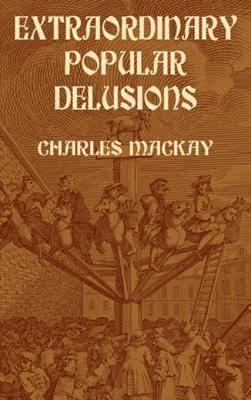7.8 /10 1 Votes7.8
Language English Media type Print Country United Kingdom | 3.9/5 Goodreads Publication date 1841 Originally published 1841 Genre Non-fiction | |||||||||||||||||||||||||||||||||
 | ||||||||||||||||||||||||||||||||||
Similar Charles Mackay books, Non-fiction books, Social psychology books | ||||||||||||||||||||||||||||||||||
Extraordinary popular delusions and the madness of crowds animated book review
Extraordinary Popular Delusions and the Madness of Crowds is an early study of crowd psychology by Scottish journalist Charles Mackay, first published in 1841. The book chronicles its subjects in three parts: "National Delusions", "Peculiar Follies", and "Philosophical Delusions". MacKay was an accomplished teller of stories, though he wrote in a journalistic and somewhat sensational style.
Contents
- Extraordinary popular delusions and the madness of crowds animated book review
- Economic bubbles
- Alchemists
- Other chapters
- Crusades
- Witch mania
- Influence and modern responses
- Quotations
- References
The subjects of Mackay's debunking include alchemy, crusades, duels, economic bubbles, fortune-telling, haunted houses, the Drummer of Tedworth, the influence of politics and religion on the shapes of beards and hair, magnetisers (influence of imagination in curing disease), murder through poisoning, prophecies, popular admiration of great thieves, popular follies of great cities, and relics. Present-day writers on economics, such as Michael Lewis and Andrew Tobias, laud the three chapters on economic bubbles. Scientist and astronomer Carl Sagan mentioned the book in his own discussion about pseudoscience, popular delusions, and hoaxes.
In later editions, Mackay added a footnote referencing the Railway Mania of the 1840s as another "popular delusion" which was at least as important as the South Sea Bubble. Mathematician Andrew Odlyzko has pointed out, in a published lecture, that Mackay himself played a role in this economic bubble; as leader writer in the Glasgow Argus, Mackay wrote on 2 October 1845: "There is no reason whatever to fear a crash".
Economic bubbles
Among the bubbles or financial manias described by Mackay are the South Sea Company bubble of 1711–1720, the Mississippi Company bubble of 1719–1720, and the Dutch tulip mania of the early seventeenth century. According to Mackay, during this bubble, speculators from all walks of life bought and sold tulip bulbs and even futures contracts on them. Allegedly, some tulip bulb varieties briefly became the most expensive objects in the world during 1637. Mackay's accounts are enlivened by colorful, comedic anecdotes, such as the Parisian hunchback who supposedly profited by renting out his hump as a writing desk during the height of the mania surrounding the Mississippi Company.
Two modern researchers, Peter Garber and Anne Goldgar, independently conclude that Mackay greatly exaggerated the scale and effects of the Tulip bubble, and Mike Dash, in his modern popular history of the alleged bubble, notes that he believes the importance and extent of the tulip mania were overstated.
Alchemists
The section on alchemysts focuses primarily on efforts to turn base metals into gold. Mackay notes that many of these practitioners were themselves deluded, convinced that these feats could be performed if they discovered the correct old recipe or stumbled upon the right combination of ingredients. Although alchemists gained money from their sponsors, mainly noblemen, he notes that the belief in alchemy by sponsors could be hazardous to its practitioners, as it wasn't rare for an unscrupulous noble to imprison a supposed alchemist until he could produce gold.
Other chapters
Crusades
Mackay describes the history of the Crusades as a kind of mania of the Middle Ages, precipitated by the pilgrimages of Europeans to the Holy lands. Mackay is generally unsympathetic to the Crusaders, whom he compares unfavourably to the superior civilisation of Asia: "Europe expended millions of her treasures, and the blood of two millions of her children; and a handful of quarrelsome knights retained possession of Palestine for about one hundred years!"
Witch mania
Witch trials in 16th- and 17th-century Western Europe are the primary focus of the "Witch Mania" section of the book, which asserts that this was a time when ill fortune was likely to be attributed to supernatural causes. Mackay notes that many of these cases were initiated as a way of settling scores among neighbors or associates, and that extremely low standards of evidence were applied to most of these trials. Mackay claims that "thousands upon thousands" of people were executed as witches over two and a half centuries, with the largest numbers killed in Germany and Spain.
Other chapters
Influence and modern responses
The book remains in print, and writers continue to discuss its influence, particularly the section on financial bubbles. (See Goldsmith and Lewis, below.)
